There’s one topic that everyone who grows tomatoes has an opinion about – and that’s pruning. To prune or not to prune? Ah, good question!
There are several reasons why you might want to prune your tomatoes, including to prevent disease; to remove sucker-branches that can crowd the plant; for shape and growth habit, especially for espaliering or single-stem vertical growing; or to slow or stop growth near the end of the growing season.
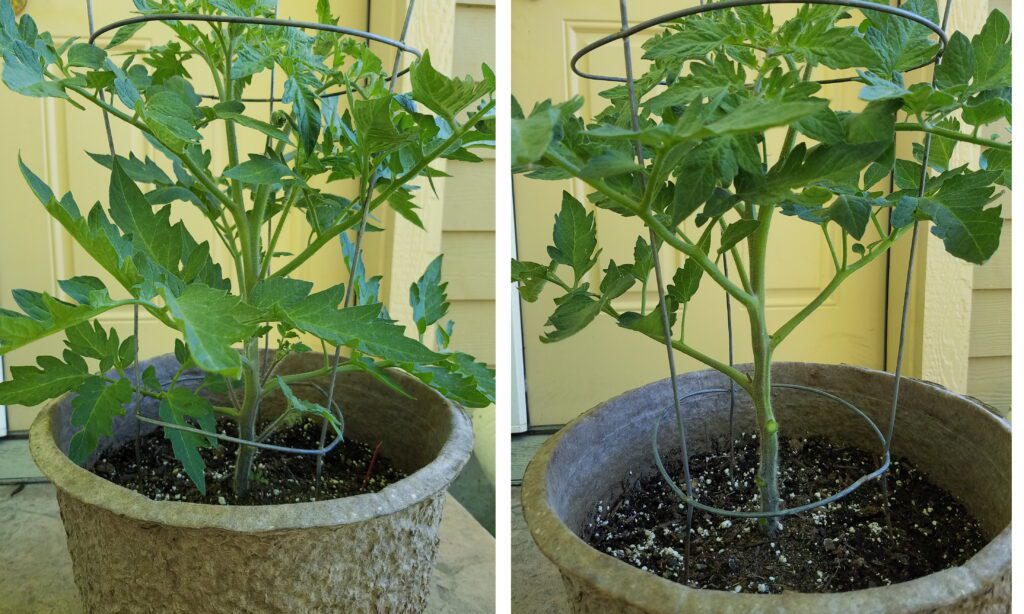
However, pruning tomatoes is not mandatory, but rather a matter of preference and growing style. If you don’t prune indeterminate tomato plants, they’ll grow just fine. They may grow huge and unwieldy, but they will still produce tomatoes.
That said, there are a few pruning cuts you should do to keep your tomato plants healthy and disease free.
Prune to Prevent Soil-borne Diseases
Tomatoes are highly susceptible to a variety of soil-borne fungal diseases, like Early Blight. The fungal spores can easily be transferred from the soil to the plant’s leaves by splashing water or even by a blowing breeze.
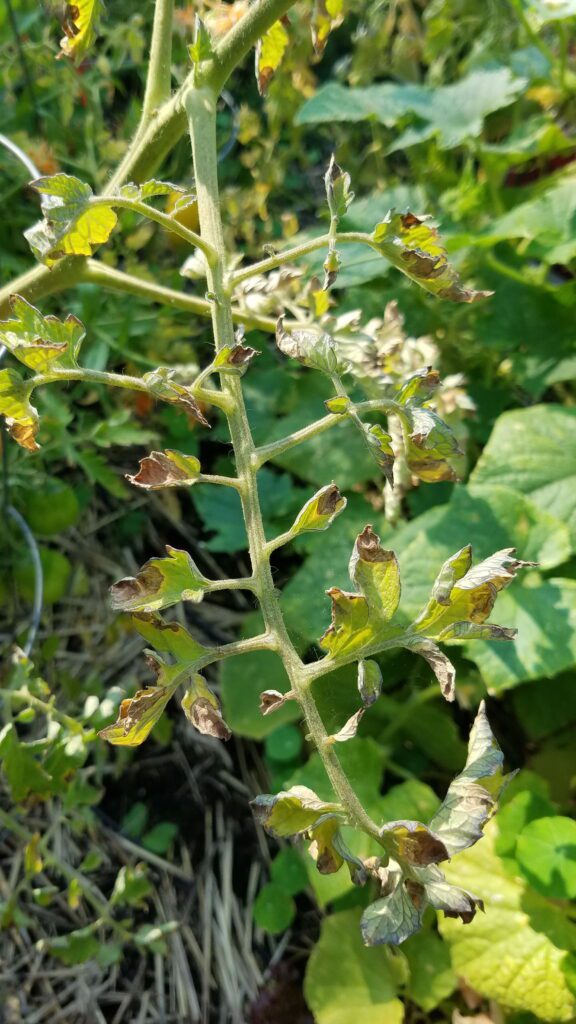
To help reduce the risk of disease, the lower leaf stems of the plant should be removed, and any upper leaves that hang to the soil surface should be pinched back to avoid soil contact.
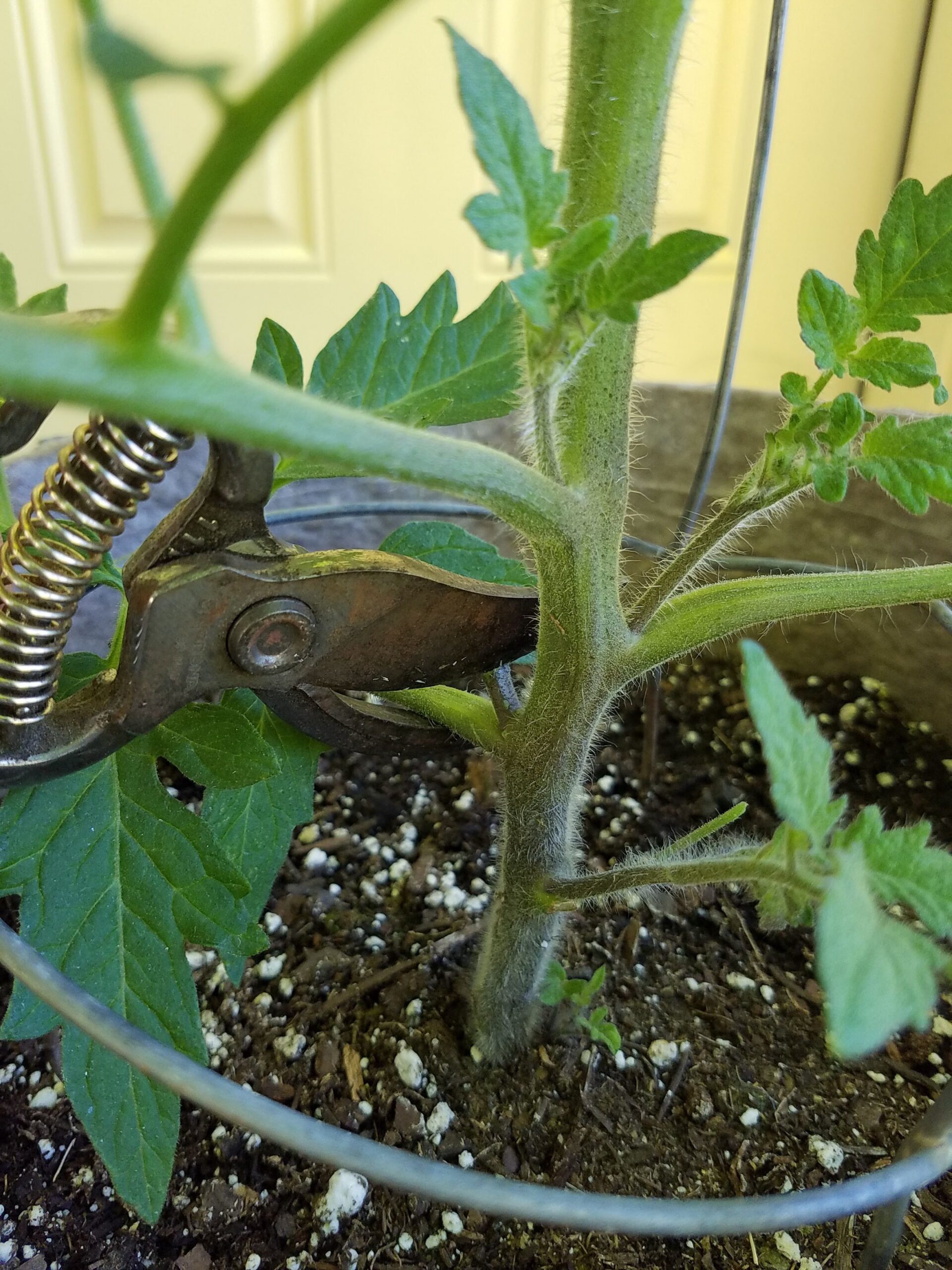

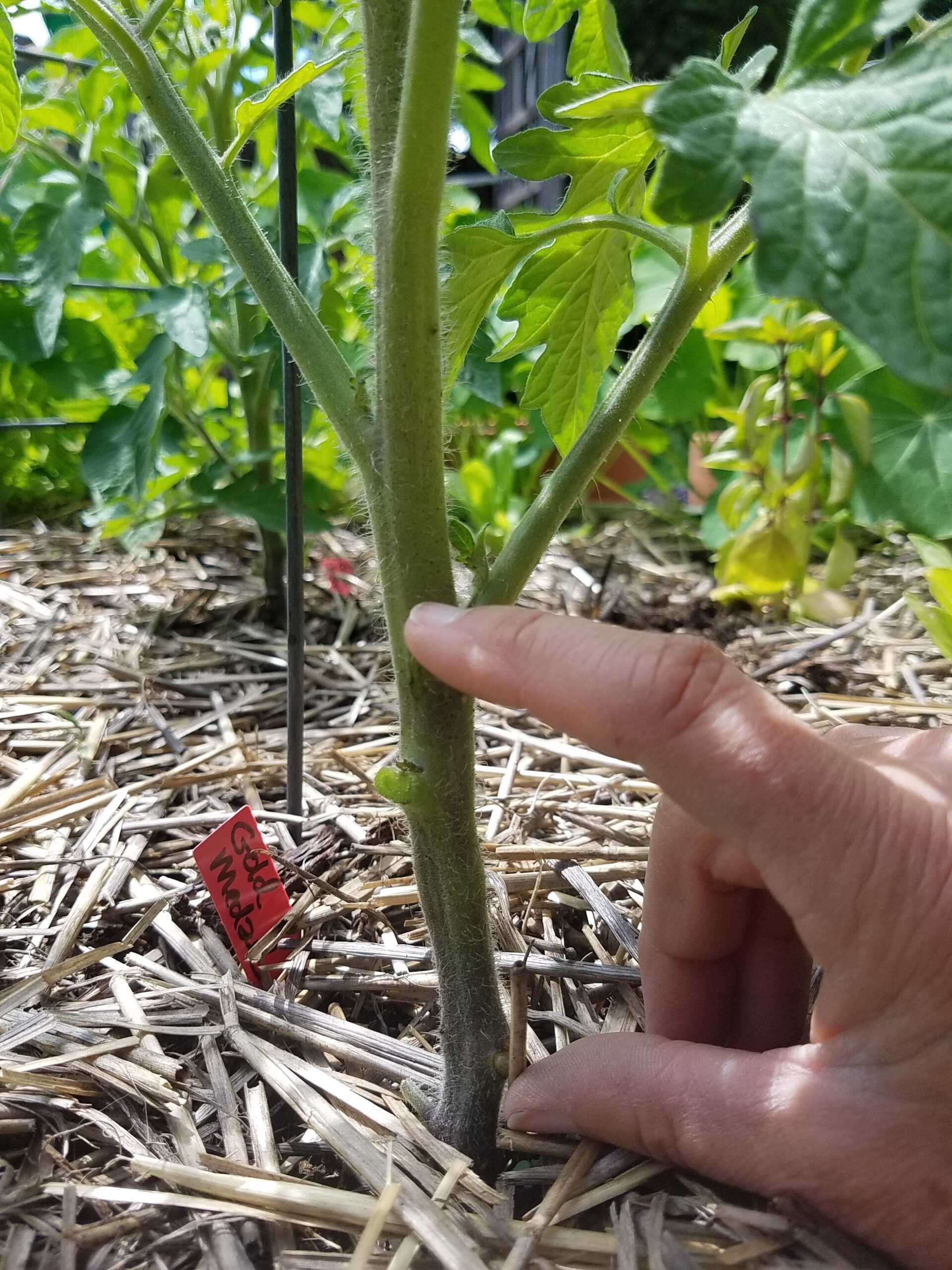
When I plant tomatoes, I remove the lowest stems closest to the soil. With a young transplant, this usually ends up being about a 2-to-3-inch space between the soil surface and the next set of leaves.
As the plant grows, I continue to remove the lower stems until there is about 8 to 10 inches of space between the lowest set of leaves and the soil.
In addition to removing the potential for leaf-to-soil contact, this type of pruning provides access to the base of the plant for watering and applying mulch.
It’s a good idea to add a layer of mulch around the base of your plants to form a barrier between the soil and the plant to lessen the chance of soil-borne diseases and conserve moisture.
Prune for Good Air Circulation
Tomatoes should also be pruned for good air circulation. Large, dense tomato plants – those that end up looking like a jungle – can become a haven for foliar diseases like powdery mildew.
To keep plants healthy, some branches should be pruned – namely the suckers. There are many opinions on removing suckers. Some gardeners prefer to remove all suckers, as they believe leaving them stresses the plant as it tries to produces more fruit than it’s capable of. While others choose to leave as many suckers as possible, since they can be a source of additional fruit.


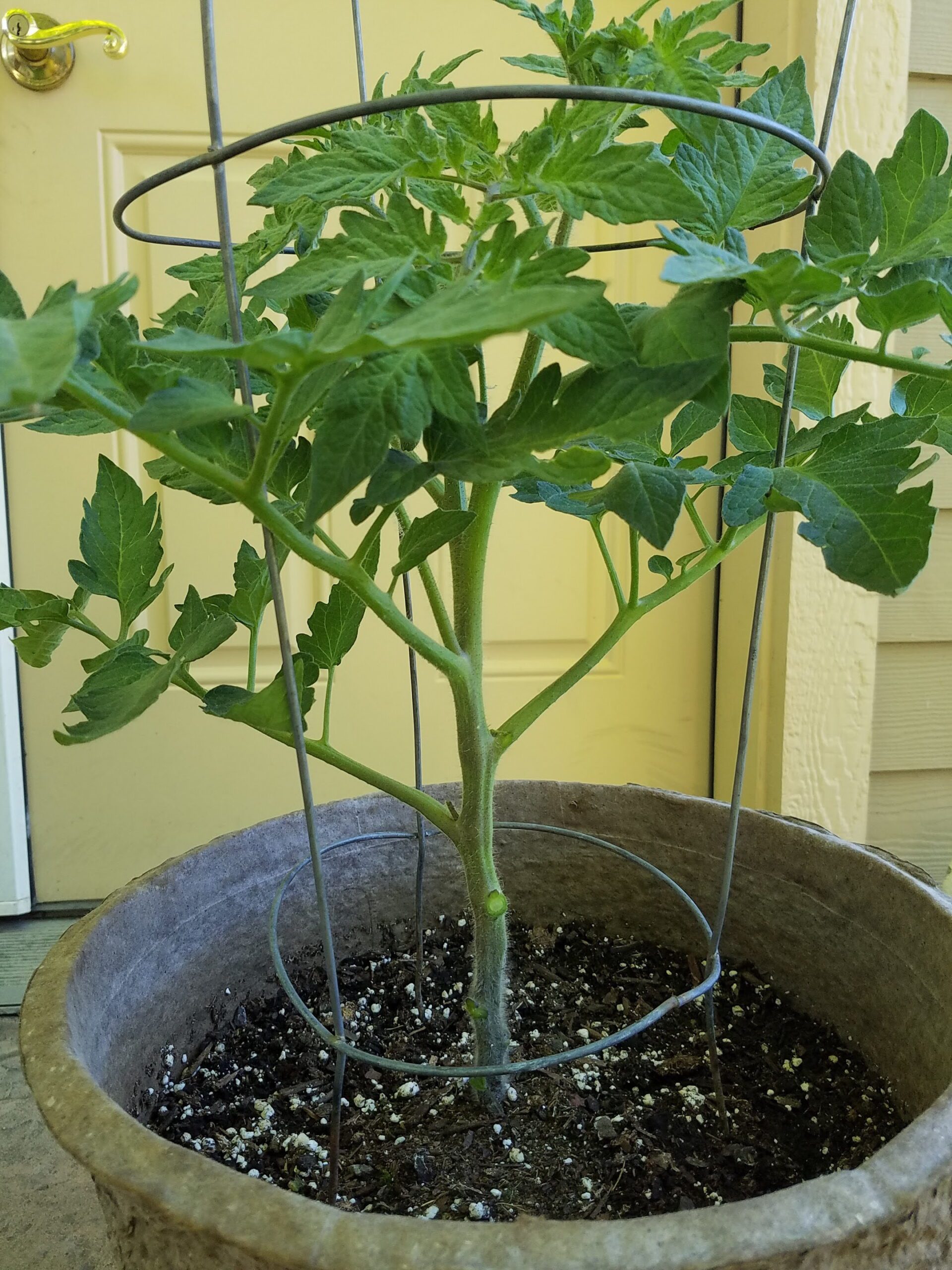
I admit, I leave a few suckers on my plants. Because of our short growing season, I want every opportunity for tomatoes that I can get. But for the most part, I cut out suckers to improve air circulation and keep my plants healthy.
When pruning, remember to only remove suckers from indeterminate type tomato plants and not from determinate or dwarf types. The reason is that shoots of determinate tomatoes stop growing once they set a terminal bud and if suckers are pruned too much, plants will have a reduced yield – and you don’t want that.
Finally, be careful not to remove the leaves that are above a fruit cluster. They are providing shade for the fruit and removing them can cause sunscald on the tomatoes.



[…] Read: How to Prune Tomatoes to Keep Them Healthy […]